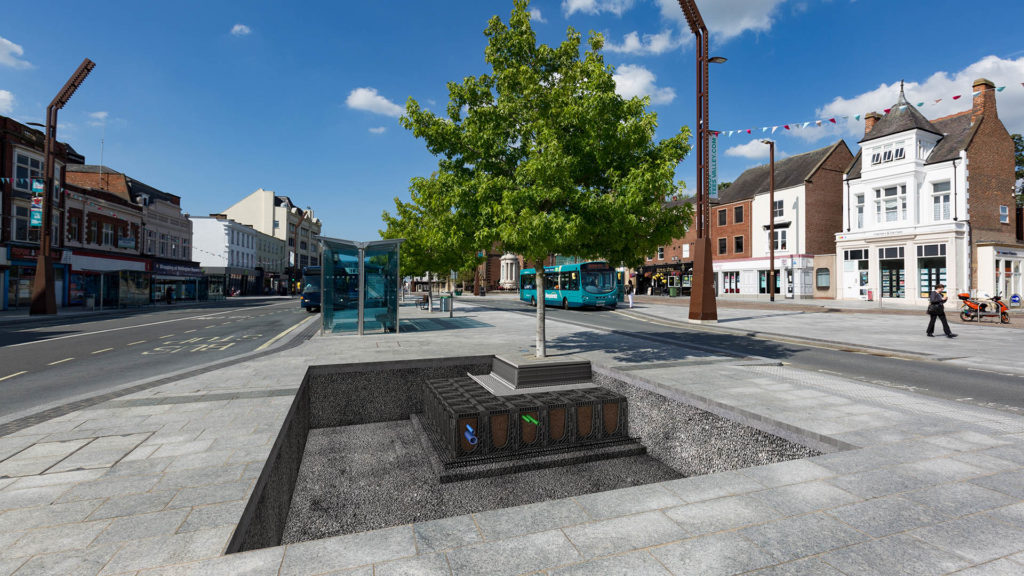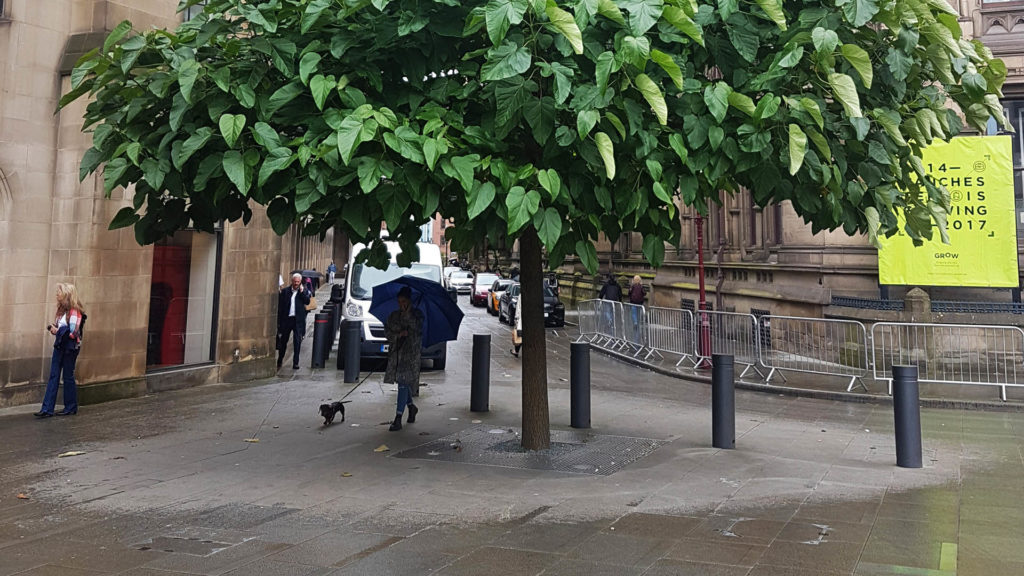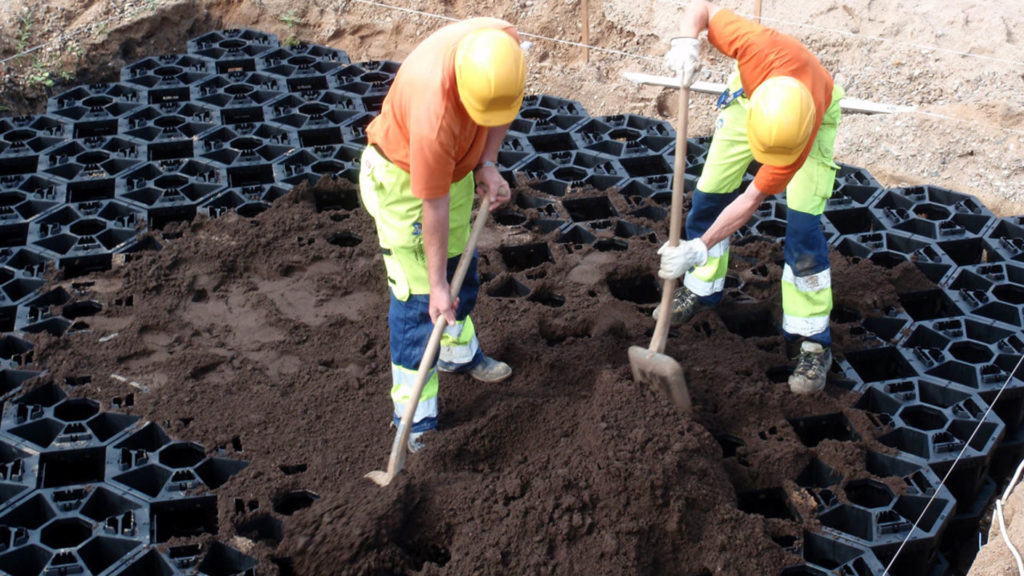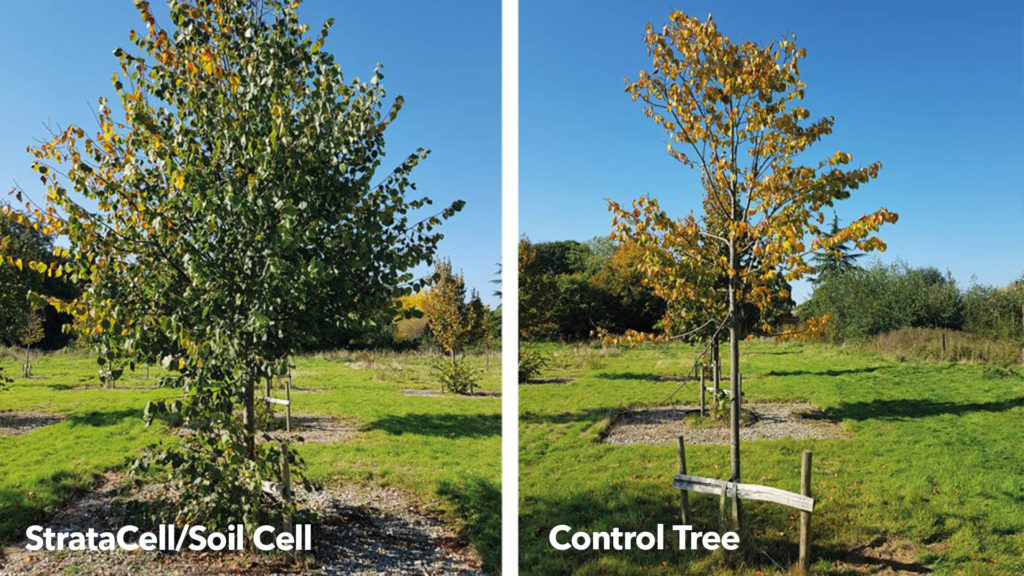Trees have evolved over millennia to grow in a wide variety of soil conditions. In fact, trees grow on every continent on earth except Antarctica, from the scorching African cities shaded by palms to the freezing Arctic circle with the birch, larch and willow trees that grow as far as the tree line allows.
Life is sustained by the growing media available. At the tree line, which is the point at which the environment no longer can sustain tree life, the soil is either non-existent, frozen all the year round, or snow covered, which inhibits micro-biological activity.

When we consider the trees suited to our urban zones, we could choose a species from those which can establish in poor soil conditions, such as we find in heavily urbanised areas. However, we find that such trees do not give us the multiple benefits that larger, broadleaf trees do. When calculating the benefits that accrue from our urban tree collections, there is –
a strong correlation between canopy leaf area and the benefit to humanity.
In poor soil quality areas, where nutrient take up is limited, we get thin canopies with little evapo-transpiration, as the soil cannot sustain significant nutrient draw If we replicate a more temperate forest floor soil condition, we can get better canopy density and larger canopy cover, and greater human benefits.

Soils are basically a mixture of organic material, such as decaying plant and animal matter, inorganic materials such as clay and silts and aggregates such as rocks, stones and sand. Along with this is water and air and the living bits; live roots, invertebrates, bacteria, fungi, insects etc. All soils contain some or all of these elements, all of which have a particular function in plant growth.
As we have mentioned before, different tree species can cope with differing soil and urban conditions, choosing the right solution is vital, it is important to consider the below ground conditions where this species would be found in nature. Whilst most trees will grow in a good soil, many will fail in a less rich one, and this is a cause of much urban tree failure.

The organic component is vital, as this is the element which feeds the tree; too low a proportion tend to nutrient depletion and tree die back or chlorosis. A soil that has too high an organic content can become too high in phosphorus, which makes it difficult for the tree to take up other important elements such as manganese and iron. A good forest floor soil will typically contain 10% organic content by volume.

The desire to make soils multi-purpose by the addition of extra aggregate to create a rock-soil matrix, often named CU Soil (medium sized aggregate) or Stockholm Soil (large stone aggregate) to compact soil so that it provides a load bearing surface is, on the face of it a sensible one. However, extra aggregate means a reduction of something else, and usually this is reduced organic, clay and air volumes. The missing organic volume leads to short term trees, failing once the nutrient reservoir has been depleted, the lacking clay leading to poor water retention, and reduced air volumes lead to anaerobic soil conditions, reducing the micro-biological activity.
Another option we see are sand based solutions or Amsterdam Soil often containing up to 90% sand, 5% organic matter and 5% clay, compaction is clearly reduced and with limited installation depths and aeration becoming an issue for the newly planted tree.
The case is simple for a tree to reach maturity it needs healthy uncompacted, aerated soil – discover more here.
At GreenBlue we are dedicated to research and have widely documented our work at Hadlow College with successful comparisons of all Tree Planting mediums, further test’s have been implemented by use of Root Radar with the help of Sharon Hosegood Associates enabling sufficient evidence to present evidence at the affluent Landscape Below Ground Conference in Chicago!
As the value of urban trees is becoming increasingly understood, it is more and more important that the below ground soil conditions and mixes are carefully considered. Existing high quality topsoil from the site is the best, but if a manufactured soil has to be used, ensure that it is tested to conform with industry standards, and a mycorrhizal inoculant will help boost a trees growth, as these fungal elements are often missing in this sort of soil.
